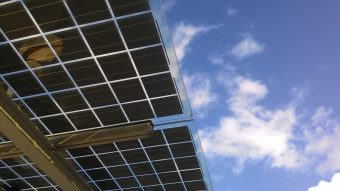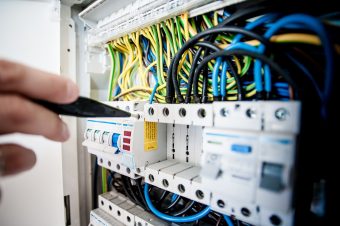
Renewable energy sources are developing daily. With the increasing use of solar energy, the responsibility for securing these systems also increases, considering that most activities take place under high voltage, which is why you need to be especially alert when it comes to fires. Precisely because of this, locations such as industrial plants and warehouses of various materials, chemicals, fuel, and the like must make safety a priority.
Recently, the company All Energy & Architecture turned to SolarEdge for these very reasons to install a photovoltaic system with the best equipment at its fuel storage facility in Italy – the Alkion terminal. On that occasion, a 440 kW system with 16 SolarEdge (SE27.6K) three-phase inverters and 785 SolarEdge (P600) power optimizers was recommended.
This project requires the placement of high voltage in addition to a large amount of flammable fuel, so these photovoltaic systems must have the highest level of safety. Therefore, SolarEdge is the right choice for associates because its systems have two built-in features: SafeDC and arc fault detection.
MORE:
- ENERGETIK ENERGIJA D.O.O.- NEW AND UNIQUE LIVE TECHNICAL TRAINING “BATTERIES AND LEGISLATION 2024” IN COOPERATION WITH SOLAREDGE
- SOLAREDGE FROM THE POINT OF VIEW OF THE INSTALLER
- ENERGETIK ENERGIJA – LIVE TECHNICAL TRAINING IN PARTNERSHIP WITH SOLAREDGE
Two special features
SafeDC is designed to protect installers and maintenance personnel from electrocution by reducing DC voltage to a touch-safe 1V per module when AC power is off.
Arc fault detection concerns the interruption of the photovoltaic system’s operation if an electric arc occurs. Considering that electric arcs can easily lead to fires, this detection system is necessary for photovoltaic systems installed near flammable materials. The All Energy & Architecture company claims that this system enables their work to be carried out in complete peace.
As the PV industry expands, stricter safety standards and regulations are becoming more commonplace. That’s why, in addition to SafeDC and arc fault detection and interruption, SolarEdge has yet another product designed to protect firefighters. Called the SolarEdge Firefighter Gateway, this product provides automatic system shutdown and real-time voltage reading, which is useful in emergencies.
Differences between traditional and SolarEdge technology

The SolarEdge system, as we have stated, has advanced safety features from the very beginning, while traditional systems, although efficient when it comes to energy conversion, still require additional improvement in safety standards.
The SolarEdge system takes care of the safety of employees, the environment and, finally, the equipment itself thanks to the aforementioned SafeDC function, which is active at all times. In particular, if there is a need to turn off the system manually or when it automatically turns off, the voltage drops very low – one volt per module. Low voltage is not dangerous to people if contact occurs, which means that electric shock will be avoided. In addition, SolarEdge inverters have the ability to detect problems such as arcing – a major cause of fires in electrical systems. When they detect such a fault, they shut down to prevent any damage, according to a specific safety standard known as UL1699B.
In traditional inverter systems, if a shutdown occurs, it does not mean that all parts are safe to touch because high voltage may still be present in the wires to which the panels are connected. Special equipment is often needed, which requires additional financial resources, for a traditional system to meet the standard provided by the SolarEdge system.
Although safety is number one, SolarEdge technology has another good side: the possibility of energy savings worth up to 79,500 euros per year and annual energy yields of up to 560,000 kWh, ensuring the offered performances precisely.
Milica Vučković



